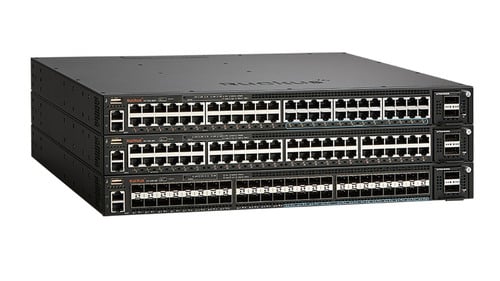In the realm of networking, a 48-port switch stands out as a versatile and essential device for businesses, schools, data centers, and other environments with extensive networking needs. These switches serve as the backbone of network infrastructure, providing connectivity for numerous devices while optimizing data transfer speeds and efficiency. In this article, we'll delve into what a 48-port switch is, its benefits, common applications, and key considerations when choosing one for your network setup.
What is a 48-Port Switch?
48 Ports Switch is a network switch that offers 48 Ethernet ports for connecting devices within a local area network (LAN). Each port serves as a connection point for devices such as computers, servers, printers, IP phones, and other networking equipment. These switches use Ethernet cables to create a network where devices can communicate, share resources, and access the internet.
Benefits of a 48-Port Switch:
High Capacity: A 48-port switch provides ample ports to connect a large number of devices, making it suitable for medium to large-scale networks.
Improved Bandwidth: With multiple ports, the switch can handle increased data traffic, ensuring smooth and efficient communication between devices.
Flexibility: Users can connect various devices, including computers, servers, VoIP phones, cameras, and more, to the switch, creating a versatile and adaptable network.
Scalability: As businesses grow and add more devices to their network, a 48-port switch offers scalability without the need for additional infrastructure upgrades.
Centralized Management: Many 48-port switches come with management features that allow administrators to monitor and control the network from a central interface, simplifying network administration.
Common Applications of a 48-Port Switch:
Office Networks: 48-port switches are commonly used in office environments to connect computers, printers, servers, and other office devices to the network.
Data Centers: In data centers, 48-port switches facilitate the connection of numerous servers and storage devices, ensuring efficient data transfer and access.
Schools and Universities: Educational institutions utilize 48-port switches to connect classrooms, labs, administrative offices, and other areas within the campus network.
Small to Medium Businesses: Businesses with moderate networking needs benefit from the versatility and scalability of 48-port switches to support their operations.
Surveillance Systems: For IP-based surveillance systems, 48-port switches are used to connect multiple cameras and recording devices, creating a comprehensive security network.
Key Considerations When Choosing a 48-Port Switch:
Speed and Performance: Consider the switch's speed capabilities (e.g., Gigabit Ethernet) and whether it meets the bandwidth requirements of your network.
PoE Support: If you have devices like IP cameras or VoIP phones that require Power over Ethernet (PoE), ensure the switch supports PoE or PoE+ to power these devices through the Ethernet cable.
Management Features: Look for switches with management capabilities such as VLAN support, Quality of Service (QoS), and SNMP (Simple Network Management Protocol) for efficient network monitoring and control.
Reliability and Redundancy: Choose a switch from a reputable manufacturer known for reliability. Consider switches with redundant power supplies or other redundancy features for uninterrupted operation.
Budget: Evaluate the switch's cost and compare it with your budget, ensuring it offers the necessary features without overspending.
Conclusion:
In the world of networking, a 48-port switch plays a vital role in creating efficient, scalable, and high-performance networks. Whether in office environments, data centers, educational institutions, or surveillance systems, these switches provide the connectivity and bandwidth necessary for modern network demands. When selecting a 48-port switch, consider factors such as speed, PoE support, management features, reliability, and budget to ensure it meets the needs of your network infrastructure. With a well-chosen 48-port switch, organizations can build robust networks that support their current needs and future growth.
For more info. visit us:





Comments